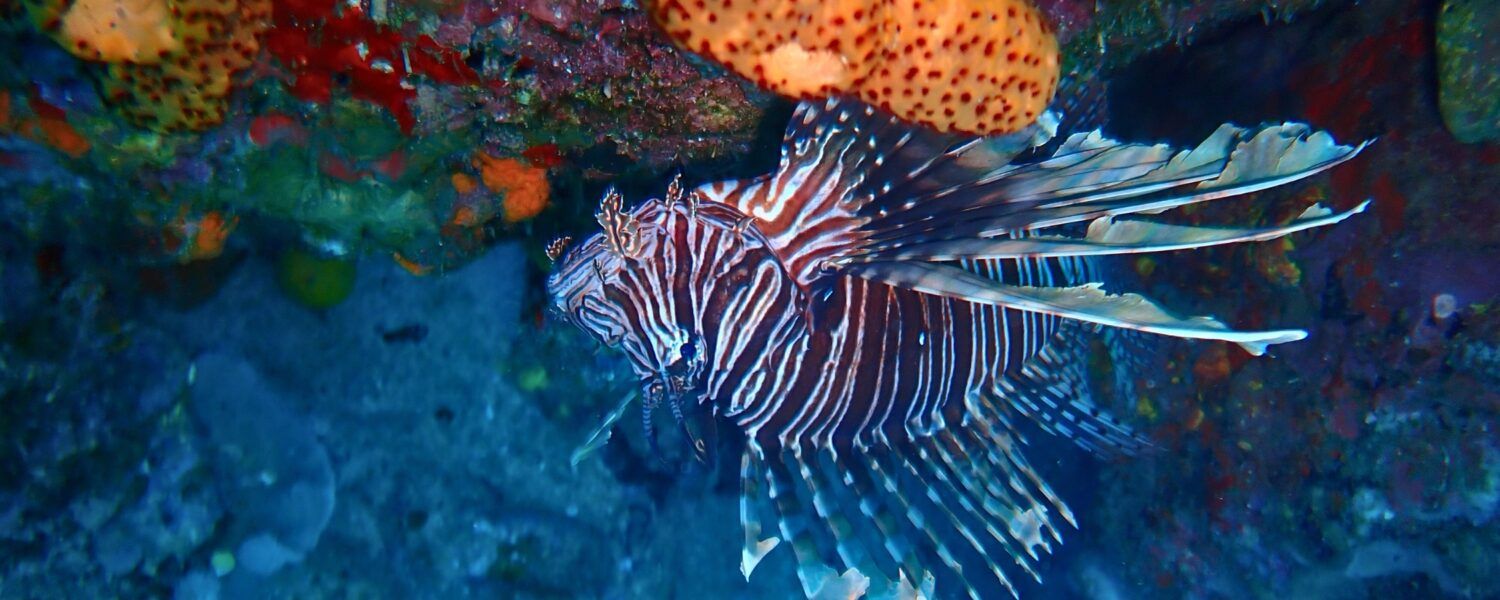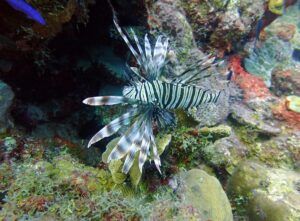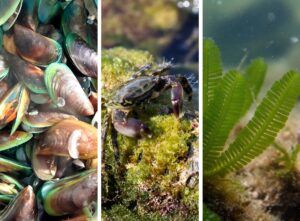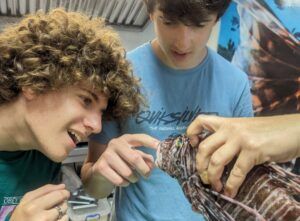
Conquering the Invaders: Lionfish and the Challenge of Invasive Species
By: Chelsey Thwaites, Program Director October 10, 2025 Marine Biology, Wildlife Conservation
The ocean is home to incredible biodiversity — but what happens when an outsider disrupts the balance? Meet the lionfish, a beautiful yet destructive predator changing marine ecosystems across the Atlantic and Caribbean. This story of the lionfish invasion reveals just how serious the problem of invasive species can be — and how we can all help turn the tide.
What Are Invasive Species?
Invasive species are plants or animals introduced to new environments where they don’t naturally belong. Once there, they often outcompete native species, disrupt food webs, and damage ecosystems. Some arrive accidentally — hidden in ship ballast water or attached to hulls — while others are released from aquariums or transported for trade.
The Lionfish Invasion
Native to the Indo-Pacific, lionfish (Pterois volitans and Pterois miles) have rapidly spread throughout the western Atlantic, Gulf of Mexico, and Caribbean since the 1980s. Their introduction is believed to have started when aquarium fish were released off Florida’s coast.
With no natural predators in these waters, lionfish populations exploded. Behind their striking red-and-white stripes and venomous spines lies a voracious hunter capable of eating dozens of small fish and crustaceans each day — including parrotfish, which are vital for keeping coral reefs free of algae. The result? Fragile reef ecosystems are thrown out of balance.

Other Marine Invaders
Lionfish aren’t alone. Here are a few other invasive marine species causing ecological headaches around the world:
Green Mussels: Originating in Asia, they’ve invaded the Gulf of Mexico and Caribbean via ship ballast water, crowding out native mussels and clogging pipes and hulls.
European Green Crabs: Introduced through ballast water and seafood shipments, these aggressive crabs prey on native clams and destroy eelgrass beds essential for young fish.
Caulerpa taxifolia (“Killer Algae”): A fast-spreading aquarium escapee, this seaweed smothers native plants and reduces biodiversity in the Mediterranean and parts of the U.S.

Fighting Back Against Lionfish
Eradicating invasive species completely is difficult, but communities are finding creative ways to fight back:
Lionfish Derbies: Divers compete to capture as many lionfish as possible in exciting, community-driven conservation events.
Eat ‘Em to Beat ‘Em: Lionfish are delicious — and by choosing them at restaurants, you help reduce their numbers while supporting sustainable seafood.
Education and Awareness: Teaching aquarium owners, divers, and coastal communities about the risks of releasing non-native species helps prevent future invasions.
How You Can Help
You don’t have to be a marine biologist or a diver to protect our oceans. Here’s how anyone can make a difference:
Volunteer: Join a beach cleanup, help restore coral reefs, or participate in local invasive-species removal events.
Learn and Share: Talk about the importance of biodiversity and the dangers of invasive species with friends and family.
Choose Sustainably: Support ocean-friendly seafood choices and conservation initiatives.
Turning the Tide
The battle against invasive species like the lionfish reminds us just how interconnected marine life truly is. Every action — from scientific research to community engagement — helps restore balance and protect the ocean for future generations.
Our Commitment in Curaçao
In Curaçao, Broadreach students partner with Lionfish Caribbean to see conservation in action. You’ll tour their facility, learn how they process and study lionfish, and even practice filleting one to better understand its anatomy and ecological impact.

Exploring Ocean Conservation in the Yucatán
On our Yucatán Ocean Conservation program, you’ll explore invasive species firsthand through reef surveys and shoreline cleanups. Students learn to identify non-native species, collect data, and participate in management strategies like removal dives and awareness campaigns that protect local ecosystems.
Where We Dive
From the vibrant reefs of Bonaire to the deep-blue waters of Fiji, Broadreach programs give students the chance to experience some of the world’s most diverse marine ecosystems — and contribute to protecting them.
Are you ready to dive in and make a difference? Join Broadreach to learn, explore, and help protect our oceans — one reef at a time.
Schedule a call with one of our program directors to explore your options!
